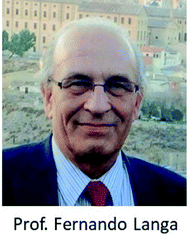Introduction to the organic materials for energy conversion and storage themed collection
Juan Luis
Delgado
 *ab and
Emilio
Palomares
*ab and
Emilio
Palomares
 *cd
*cd
aPOLYMAT, University of the Basque Country UPV/EHU, Avenida de Tolosa 72, Donostia – San Sebastián 20018, Spain. E-mail: juanluis.delgado@polymat.eu; Web: http://www.twitter.com/JuanLDelgadoC
bIkerbasque, Basque Foundation for Science, Bilbao 48013, Spain
cInstitute of Chemical Research of Catalonia-The Barcelona Institute of Science and Technology (ICIQ-BIST), Avda. Països Catalans, 16, Tarragona, E-43007, Spain. E-mail: epalomares@iciq.es; Web: http://www.twitter.com/palomaresgroup
dICREA, Passeig Lluís Companys 23, Barcelona, E-08010, Spain
In this context, in recent years the scientific community has turned its attention to the development of renewable energy sources such as solar energy. Thus, satisfying the global energy demand with solar energy requires efficient transformation of sunlight, suitably combined with an improvement in energy storage systems.
Organic materials have played a very important role in the development of technologies to harvest sunlight, as well as in its transformation and storage. Due to their great chemical versatility, organic materials can be suitably tuned by chemical synthesis, to be incorporated into different devices for generating or storing solar energy. Thanks to their outstanding electronic and optical properties, organic materials have been used in many energy conversion and storage devices, such as organic solar cells1 or batteries.2
This themed collection in Sustainable Energy & Fuels is intended to bring to the attention of the scientific community the most recent and significant advances in the use of organic materials for energy conversion and storage.
We would like to dedicate the editorial of this themed collection to Prof. Fernando Langa on his 65th birthday. Fernando Langa received his PhD in 1981 from Universidad Complutense de Madrid. He carried out postdoctoral research with Prof. Horspool at the University of Dundee, and in 1991 he joined the Universidad de Castilla-La Mancha. Prof. Langa received a prize for research excellence from the Spanish Royal Society of Chemistry (RSEQ) thanks to his outstanding contributions in organic photovoltaics. His research is mainly focused on the chemical modification of carbon nanostructures to be used in organic solar cells.3
Acknowledgements
J. L. D. acknowledges Ikerbasque, the Basque Foundation for Science and Polymat Foundation, for an "Ikerbasque Research Associate" contract. J. L. D. acknowledges the Basque Government (PIBA_2019_1_0009 research project) and the MICINN of Spain for CTQ 2016-81911-REDT and RTI 2018-101782-B-I00 grants. E. P. thanks MICINN and AGAUR (projects PID2019-109389RB-I00, 2017-SGR-00978). E. P. is also thankful to ICIQ and ICREA for economical support.Notes and references
- K. A. Mazzioa and C. K. Luscombe, NREL Best Research-Cell Efficiencies, Chem. Soc. Rev., 2015, 44, 78–90 RSC.
- T. B. Schon, B. T. McAllister, P.-F. Lia and D. S. Seferos, Chem. Soc. Rev., 2016, 45, 6345–6404 RSC.
- J. L. Delgado, N. Martín, P. de la Cruz and F. Langa, Chem. Soc. Rev., 2011, 40, 5232–5241 RSC.
| This journal is © The Royal Society of Chemistry 2021 |

